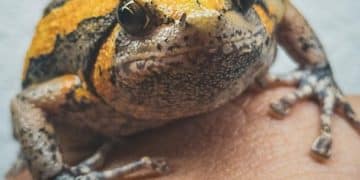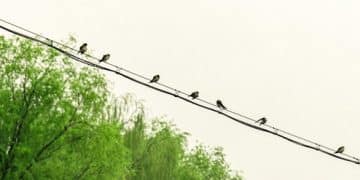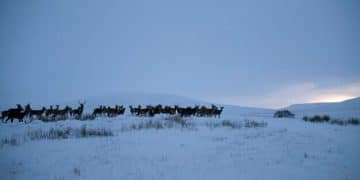Protecting Bats: How to Help Fight White-Nose Syndrome in the US
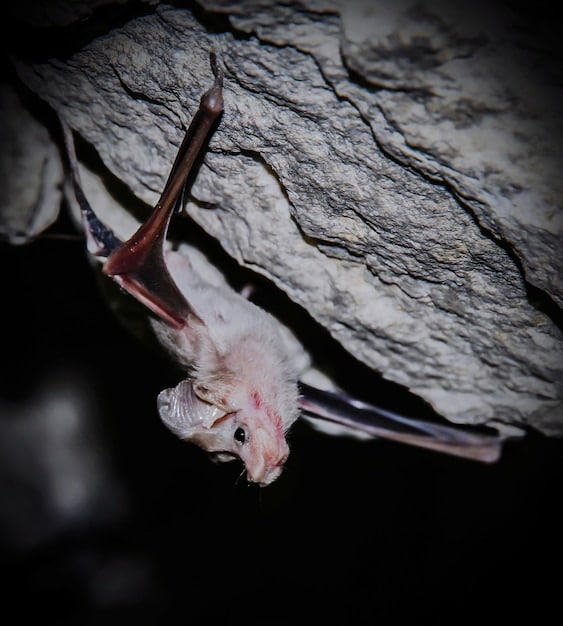
Protecting bats from white-nose syndrome in the US involves several key actions, including supporting research, avoiding disturbing bats during hibernation, properly decontaminating gear used in caves, and advocating for policies that protect bat habitats.
The rapid spread of white-nose syndrome is devastating bat populations across the United States. Protecting bats from white-nose syndrome: what you can do to help these essential creatures in the US involves understanding the disease, its impact, and the specific steps individuals, communities, and organizations can take to mitigate its effects.
Understanding White-Nose Syndrome and Its Impact on Bats
White-nose syndrome (WNS) is a fungal disease that affects hibernating bats. First discovered in New York in the winter of 2006-2007, it has since spread to numerous states and Canadian provinces, causing significant declines in bat populations.
What is White-Nose Syndrome?
WNS is caused by the fungus *Pseudogymnoascus destructans* (Pd). This fungus thrives in cold and humid environments, making caves and mines ideal habitats for it. The fungus infects the skin of bats, particularly around their muzzles, wings, and ears, hence the name “white-nose syndrome.”
How Does WNS Affect Bats?
The fungus disrupts bats’ hibernation cycles. Infected bats arouse more frequently than healthy bats, causing them to deplete their fat reserves prematurely. This increased activity during winter leads to starvation, dehydration, and ultimately, death.
The impact of WNS is devastating. Some bat species, like the little brown bat, have experienced population declines of over 90% in affected areas. The loss of bats has significant ecological and economic consequences.
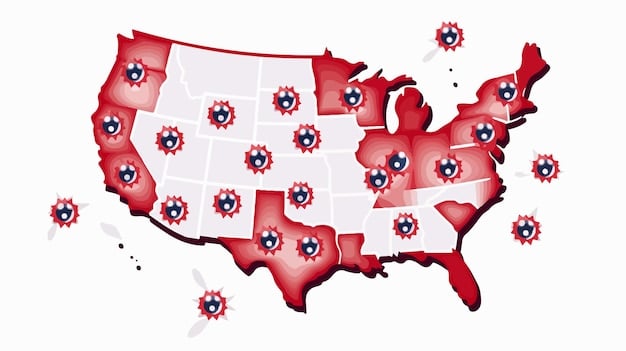
Here are key ways that WNS affects bats:
- Disrupts hibernation patterns, leading to more frequent arousals.
- Depletes essential fat reserves needed to survive the winter.
- Causes physiological stress and dehydration.
- Results in high mortality rates, particularly in susceptible species.
White-nose syndrome poses a significant threat to bat populations in the US. Understanding the disease and its impacts is the first step in protecting these essential creatures. By working together, we can help mitigate the impacts of WNS and ensure the survival of bats for future generations.
Supporting Research and Monitoring Efforts
One of the most impactful ways to protect bats from white-nose syndrome is by supporting ongoing research and monitoring efforts. These initiatives are crucial for understanding the disease, developing effective treatments, and tracking its spread.
Funding Research Initiatives
Government agencies, universities, and non-profit organizations are actively involved in WNS research. Supporting these institutions through donations or advocacy can significantly boost their ability to conduct critical studies. These studies focus on various aspects of WNS, including the fungus’s biology, the disease’s pathology, and potential treatment options.
Participating in Citizen Science Projects
Citizen science projects offer opportunities for volunteers to contribute to bat monitoring efforts. These projects often involve activities such as counting bats at roost sites, collecting data on bat activity using acoustic monitoring devices, and reporting observations of sick or dead bats to wildlife agencies.
Active participation in citizen science projects helps researchers gather valuable data over broad geographic areas, providing insights into bat distribution, population trends, and the spread of WNS.
Supporting research and monitoring efforts is essential for developing effective strategies to combat white-nose syndrome. These efforts are helping to advance our understanding of the disease and identify potential interventions to protect bat populations. Here are some direct ways to assist:
- Donate to organizations funding WNS research.
- Volunteer for bat monitoring programs in your area.
- Report any unusual bat sightings to your local wildlife agency.
- Advocate for increased funding for WNS research at the state and federal levels.
By supporting research and monitoring efforts, individuals can make a significant contribution to the conservation of bats and the fight against white-nose syndrome.
Practicing Responsible Cave and Mine Exploration
Recreational and scientific cave and mine exploration can inadvertently contribute to the spread of *Pseudogymnoascus destructans*, the fungus that causes white-nose syndrome. Practicing responsible exploration techniques is essential to prevent the fungus from being transported to new locations.
Decontamination Protocols
Decontaminating gear after visiting caves or mines is crucial. This involves cleaning and disinfecting clothing, footwear, and equipment that may have come into contact with the fungus. The US Fish and Wildlife Service provides detailed decontamination protocols that should be followed carefully.
Avoiding Cave Visits During Hibernation Season
Bats are particularly vulnerable to disturbance during hibernation. Entering caves during this time can cause bats to arouse, depleting their energy reserves and increasing their susceptibility to WNS. Avoiding cave visits during the hibernation season helps minimize stress on bat populations.
Responsible cave and mine exploration can significantly reduce the risk of spreading the fungus. By following decontamination protocols and avoiding cave visits during hibernation, explorers can help protect bat populations from white-nose syndrome.
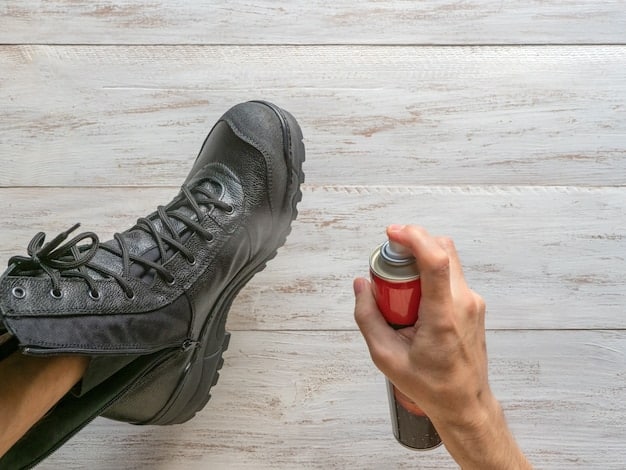
Here are several actions explorers can take:
- Always decontaminate your gear thoroughly after each cave or mine visit.
- Avoid visiting caves during the hibernation season (typically October to May).
- Follow all guidelines and regulations set by cave and land managers.
- Educate other explorers about the importance of responsible cave exploration.
Implementing these practices is essential for preventing the spread of WNS and protecting bat populations across the US.
Creating and Protecting Bat Habitats
Protecting and creating suitable bat habitats is another critical aspect of bat conservation. Bats require places to roost, forage, and raise their young. Ensuring these habitats are available and protected can help support bat populations affected by white-nose syndrome.
Protecting Natural Roost Sites
Natural roost sites, such as caves, mines, and hollow trees, are essential for bats. These sites provide shelter from predators and the elements, as well as a place to rest and hibernate. Protecting these roost sites from disturbance and destruction is essential for bat conservation.
Creating Artificial Roost Sites
In areas where natural roost sites are limited, artificial roost sites, such as bat houses, can provide valuable habitat. Bat houses should be properly designed and installed to attract bats and provide a safe and comfortable place to roost.
Enhancing Foraging Habitats
Bats feed on insects, so providing abundant foraging habitats is essential. This can be achieved by preserving and restoring natural habitats, such as forests, meadows, and wetlands, which support a diverse insect population. Reducing the use of pesticides can also help protect insect populations and ensure bats have access to adequate food resources.
Protecting and creating bat habitats is a proactive approach to bat conservation. By providing suitable roosting and foraging habitats, we can help support bat populations affected by white-nose syndrome and ensure their survival for future generations.
Some suggestions include:
- Preserve and protect natural roost sites, such as caves and hollow trees.
- Install bat houses in areas where natural roost sites are limited.
- Restore and enhance foraging habitats by planting native vegetation.
- Reduce pesticide use to protect insect populations.
- Support local conservation efforts focused on habitat preservation.
These combined efforts will greatly benefit bat populations and their long-term survival.
Advocating for Bat Conservation Policies
Advocating for policies that protect bats and their habitats is essential for long-term conservation success. These policies can provide legal protection for bat roost sites, regulate cave and mine exploration, and promote responsible land management practices.
Supporting Legislation
Contacting elected officials to express support for bat conservation legislation can influence policy decisions. This includes supporting bills that provide funding for WNS research, protect bat habitats, and regulate activities that may harm bat populations.
Promoting Responsible Land Management
Encouraging responsible land management practices on public and private lands can benefit bats. This includes preserving natural habitats, reducing pesticide use, and implementing measures to prevent disturbance of bat roost sites. Landowners can also play a role by managing their properties in ways that support bat populations.
Advocating for bat conservation policies is a crucial step towards ensuring the long-term survival of bats. By supporting legislation and promoting responsible land management practices, we can create a more favorable environment for bat populations affected by white-nose syndrome.
Here are some clear and direct advocacy actions:
- Contact your elected officials to express support for bat conservation legislation.
- Support organizations that advocate for bat conservation policies.
- Promote responsible land management practices in your community.
- Educate others about the importance of bat conservation policies.
Through these actions, we can help establish stronger protections for bats at both local and national levels.
Educating Others and Raising Awareness
Raising awareness about white-nose syndrome and its impact on bats is crucial for mobilizing support for conservation efforts. Many people are unaware of the important role that bats play in our ecosystems and the threats they face. By educating others about these issues, we can inspire action and promote responsible stewardship of bat populations.
Sharing Information
Sharing information about WNS and bat conservation through social media, community events, and educational programs can reach a wide audience. This includes highlighting the ecological and economic benefits of bats, the threats they face, and the steps individuals can take to help.
Engaging with Local Communities
Engaging with local communities through workshops, presentations, and educational materials can promote a better understanding of bats and their conservation needs. This includes partnering with schools, libraries, and community organizations to provide educational resources and outreach programs.
Educating others and raising awareness about WNS and bat conservation is a powerful way to promote action and inspire change. By sharing information and engaging with local communities, we can create a more informed and supportive environment for bat populations affected by white-nose syndrome.
Some specific ways to educate and raise awareness include:
- Share information about bats and WNS on social media.
- Organize community events focused on bat conservation.
- Provide educational materials to schools and libraries.
- Partner with local organizations to promote bat conservation.
These awareness initiatives can ultimately translate to greater support and on-the-ground action for bat conservation.
| Key Point | Brief Description |
|---|---|
| 🔬 Research Support | Fund research on WNS to find treatments and understand the disease. |
| 🧳 Cave Decontamination | Clean gear after caving to prevent spreading the fungus. |
| 🏡 Habitat Protection | Protect and create roosting and foraging habitats for bats. |
| 📣 Advocacy | Support policies that protect bats and their habitats. |
Frequently Asked Questions
▼
White-nose syndrome (WNS) is a fungal disease caused by *Pseudogymnoascus destructans* that affects hibernating bats. It leads to increased arousal frequency, depleting their fat reserves and causing death.
▼
WNS spreads primarily through bat-to-bat contact in roosting sites or through humans inadvertently carrying fungal spores on clothing and gear between caves.
▼
You can help by supporting research, decontaminating caving gear, protecting bat habitats, advocating for conservation policies, and raising awareness about WNS.
▼
Bats play crucial roles in pest control by consuming insects and in pollination and seed dispersal, contributing to the health and diversity of ecosystems.
▼
You can report unusual bat sightings, especially sick or dead bats, to your local wildlife agency or conservation organization for further investigation.
Conclusion
Protecting bats from white-nose syndrome requires a multifaceted approach involving research support, responsible cave exploration, habitat protection, policy advocacy, and public education. By working together, we can help mitigate the impacts of WNS and ensure the survival of these essential creatures for future generations. Every action, no matter how small, contributes to the larger effort of conserving bat populations in the US.
